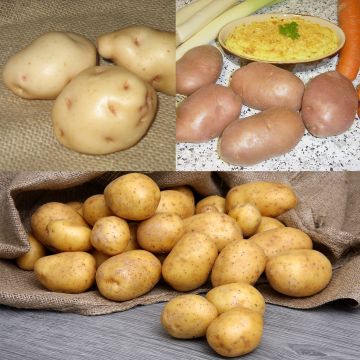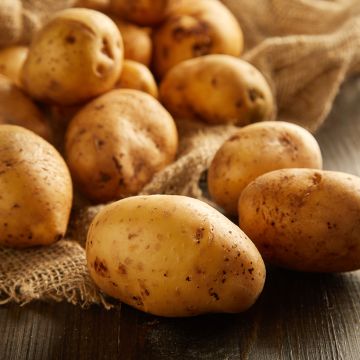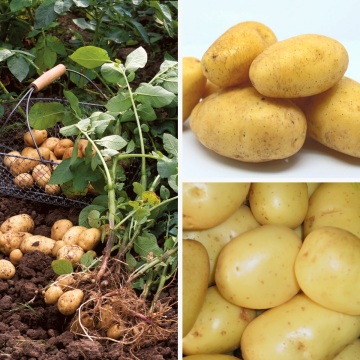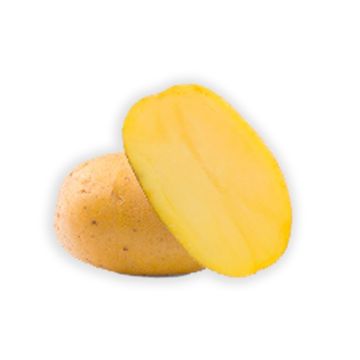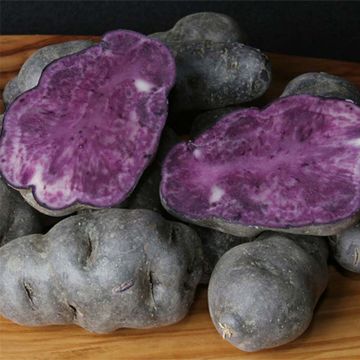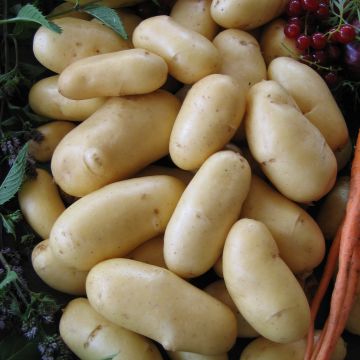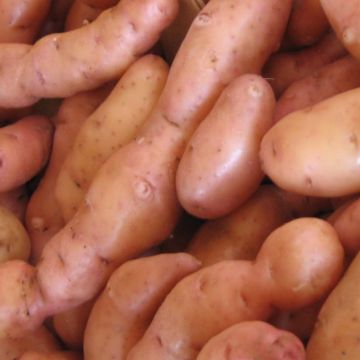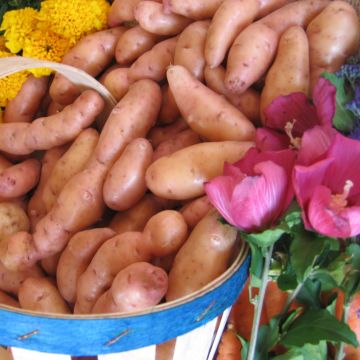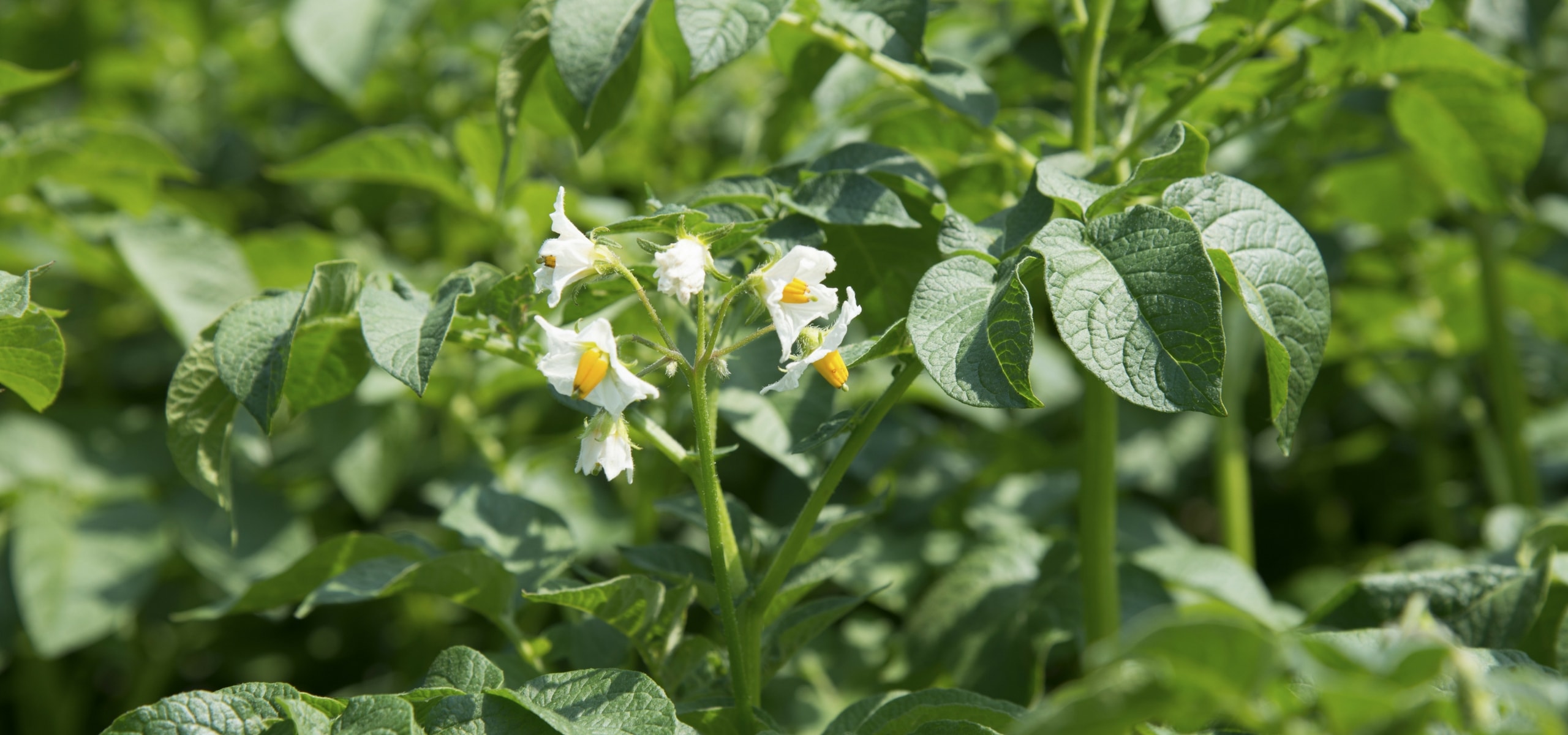
Planting potato
in the vegetable garden
Contents
Where to plant them: climate, exposure
Potato is an easy-to-grow tubercle that thrives in all climates and soils. Choose a sunny location.
The soil
Potatoes thrive in light, deep, and rich soils. Add well-rotted compost (at least 3 kg per square metre) in the previous autumn, by raking it in to a depth of 5 cm, after thoroughly loosening the soil.
Discover other Seed potatoes
View all →Available in 0 sizes
Available in 1 sizes
Available in 0 sizes
Available in 2 sizes
Available in 1 sizes
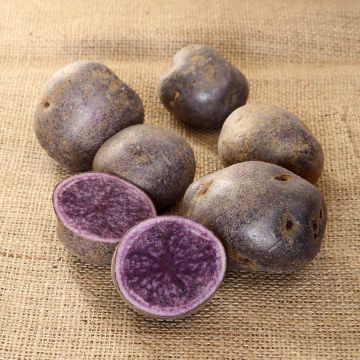
Available in 1 sizes
Available in 3 sizes
Available in 1 sizes
Available in 1 sizes
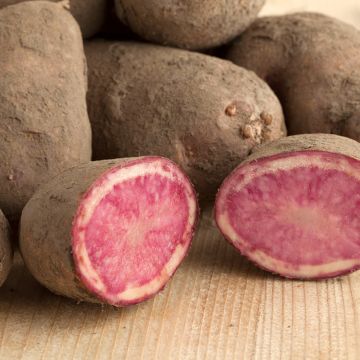
Available in 1 sizes
Germinating tubercles
Planting is done with previously sprouted tubercles. If they are not sprouted at the time of purchase, they should be stored for a few days in the light, in an unheated room (a temperature of 10-15 °C is ideal). Place them on crates, without stacking them, and be patient!
When to plant?
Potatoes are planted from February under cover (cold greenhouse, tunnel or under cloches) for the “early” varieties and from mid-March to May for other varieties, when the soil temperature reaches 10 °C.
How to plant?
Two methods are currently used: traditional planting in soil (with earthing up) and cultivation under mulch.
Traditional method with earthing up during cultivation: form rows of 10 cm deep, spaced 50 to 70 cm apart. Place one tubercle, sprout facing up, every 40 cm (or 30 cm for early varieties). Cover with soil and carry out an initial watering if necessary. One to two earthing ups will be required during cultivation.
Mulch method: Planting under mulch involves placing the tuber on the soil (maintaining the same spacing as for traditional cultivation) and covering it with a thick layer of mulch. This protection will be supplemented as the plant grows, with the tubers always needing to be kept out of the light.
In small gardens, one might also consider a tower cultivation: it can be constructed from various materials (wood, wire mesh, bags, tyres…). The tubers are placed on a bed of potting soil or compost. As the plant grows, it is covered with potting soil, leaving just the last leaves exposed, and so on until the top of the tower, allowing the tubers to form along the entire height of the container.
These techniques allow for harvesting potatoes without damaging them, but they require having straw or a large quantity of “green waste” such as grass clippings, fallen leaves, or shredded material available in the garden.
- Subscribe!
- Contents































